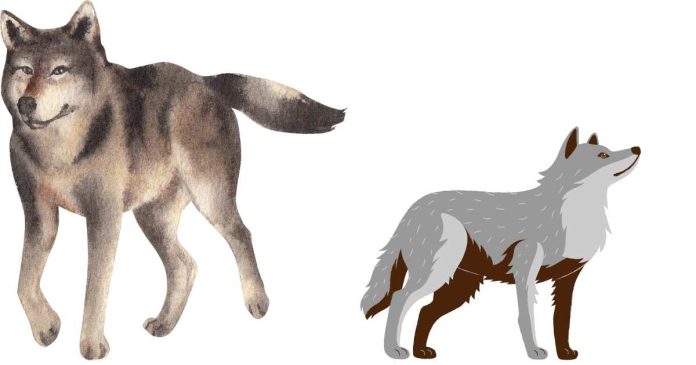The average weight of an adult wolf varies based on several factors, including species, sex, habitat, and diet. Here’s a detailed look at the weight of adult wolves:
1. Gray Wolf (Canis lupus):
The gray wolf, also known as the timber wolf, is the largest and most widely distributed wolf species. The weight can vary greatly depending on location and environmental factors.
- Average Weight:
- Males: Typically range from 100 to 120 pounds (45 to 54 kg).
- Females: Usually lighter, ranging from 70 to 90 pounds (32 to 41 kg).
- Range:
- In some northern regions like Canada or Alaska, males can reach up to 140 pounds (63 kg), and females may weigh around 100 pounds (45 kg).
- In southern or more temperate regions, such as the Great Lakes or Europe, gray wolves may be smaller, weighing closer to the 70-100 pounds (32-45 kg) range.
- Factors Affecting Weight:
- Geographic location: Wolves in colder climates (e.g., Alaska, Canada, Russia) tend to be larger, possibly due to the need for larger body sizes to survive in harsher conditions.
- Diet: A wolf’s weight is heavily influenced by its diet. Wolves in areas where larger prey like elk or moose are available tend to grow bigger compared to those relying on smaller prey like deer or rabbits.
- Seasonality: Wolves typically have their highest weight right after a successful hunting season (often in late autumn). Weight can decrease during leaner times, especially in winter or when food is scarce.
2. Red Wolf (Canis rufus):
The red wolf, which is smaller than the gray wolf, is primarily found in the southeastern United States.
- Average Weight:
- Males: Typically range from 60 to 80 pounds (27 to 36 kg).
- Females: Usually lighter, between 50 and 70 pounds (23 to 32 kg).
- Factors:
- Red wolves are smaller due to the subtropical and temperate regions they inhabit, where the prey is usually smaller and their lifestyle doesn’t require as much body mass for survival.
3. Eastern Wolf (Canis lycaon):
The eastern wolf is found primarily in parts of Canada, the Great Lakes, and some northeastern U.S. regions. They are smaller than the gray wolf but larger than red wolves.
- Average Weight:
- Males: Around 70 to 110 pounds (32 to 50 kg).
- Females: Typically weigh 50 to 80 pounds (23 to 36 kg).
4. Other Wolf Species:
There are several other wolf species or subspecies, such as the Ethiopian wolf and Indian wolf, which are smaller in size.
- Ethiopian Wolf (Canis simensis): Weighs approximately 24 to 42 pounds (11 to 19 kg).
- Indian Wolf (Canis lupus pallipes): Typically weighs around 40 to 75 pounds (18 to 34 kg).
5. Factors That Influence Weight:
Sex:
- Male wolves are generally larger and heavier than females, which is common in most mammalian species.
Age:
- Pups: Wolf pups are born weighing around 1 pound (0.45 kg). By the time they are about 6 months old, they can weigh between 40 to 50 pounds (18 to 23 kg).
- Elderly wolves may experience weight loss due to declining health, especially if they have difficulty hunting.
Health and Diet:
- Wolves that are healthy and have access to sufficient food tend to be heavier.
- Wolves that struggle to find prey or experience illness may have lower body weights.
Summary of Average Weights (for the Gray Wolf):
- Males: 100–120 pounds (45–54 kg) on average, with some reaching up to 140 pounds (63 kg).
- Females: 70–90 pounds (32–41 kg) on average.
- Larger individuals can be found in the northernmost habitats, while those in more temperate regions tend to be smaller.
Conclusion:
The gray wolf is the largest species and typically weighs between 70 to 120 pounds (32 to 54 kg), with males being heavier than females. Smaller species, like the red wolf, can weigh as little as 50 pounds (23 kg). The geographic region and diet have significant impacts on the wolf’s size, making it crucial to consider these factors when discussing the weight of wolves in different parts of the world.


